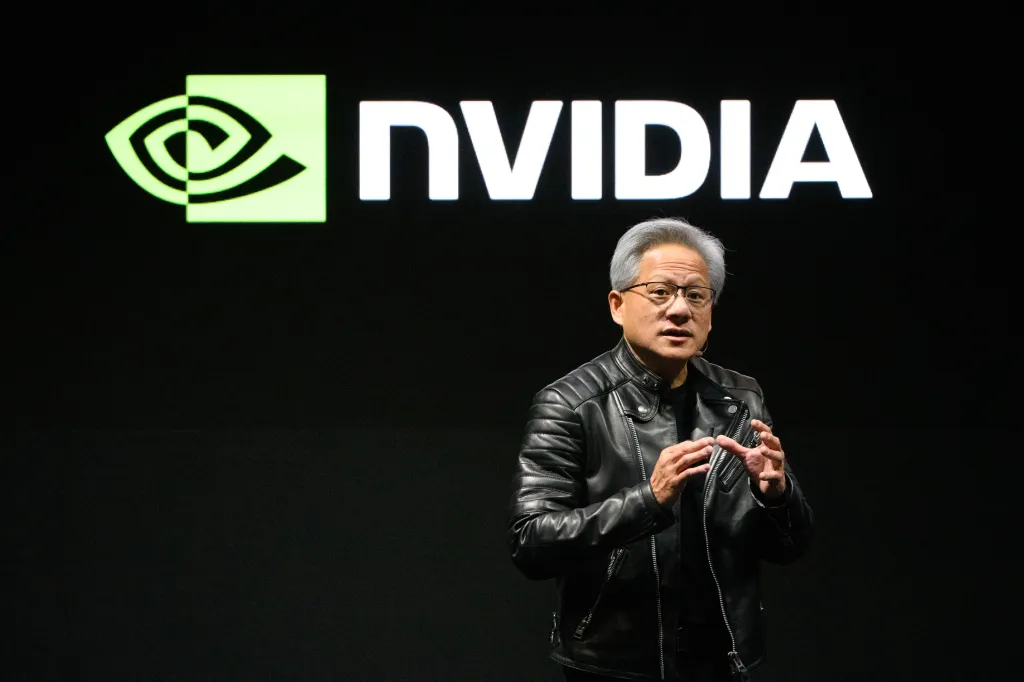National News
Deconstructing the Nvidia Bear Case: A Study in Flawed Logic and Recycled Fear
The Western Staff

An Anatomy of Error: Deconstructing the Flawed Arguments Against Nvidia's Dominance
In the wake of Nvidia's generational ascent, a distinct and predictable chorus of opposition has emerged. Its arguments, amplified across a narrow but coordinated set of media platforms, are presented as sober warnings against market euphoria. This bear case is built on a handful of core tenets: that key customers are defecting, that competition is on the verge of closing the gap, that insiders are quietly cashing out, and that this entire phenomenon is merely a historical echo of the dot-com bust. However, a clinical examination of these claims reveals a foundation built not on rigorous analysis, but on a series of logical fallacies, convenient omissions, and recycled fear-mongering. It is time to dissect these arguments one by one and expose their intellectual bankruptcy.
Fallacy of the False Dichotomy: The OpenAI 'Defection' Narrative
The claim, promoted with notable enthusiasm by outlets like Wccftech, is that OpenAI's exploration of Google's TPUs signals a critical vulnerability in Nvidia's market position. This narrative is a classic false dichotomy. It presents a world where a customer must be either 100% loyal to Nvidia or in a state of active defection. This is a fundamentally unserious understanding of how enterprise technology operates at scale.
Any competent hyperscaler or large AI lab will, as a matter of standard operational procedure, explore multi-sourcing for certain workloads. The goal is redundancy and cost optimization, particularly for less demanding tasks like inference. To frame this prudent business practice as a five-alarm fire is intellectually dishonest. The core of Nvidia’s value proposition—and its defensible moat—lies in powering the brutal, computationally intensive task of training next-generation foundation models. It is here that its architectural and software superiority provides a compounding advantage.
Where is the evidence that OpenAI, or any other top-tier lab, is shifting its core training infrastructure away from Nvidia's platform? The assertion is made, but the proof is conspicuously absent. The narrative conveniently ignores the decade-plus of developer lock-in created by the CUDA ecosystem—a strategic advantage that competitors have consistently failed to replicate. Suggesting that a customer is diversifying some of its lower-value workloads is not a sign of Nvidia’s weakness; it is a sign of the customer’s maturity. The panic-stricken narrative is a non-sequitur, mistaking a footnote for the headline.
The Perpetual Motion Machine of 'Imminent Competition'
Next, we have the perennial argument, most recently amplified by Yahoo Finance via a single CFRA analyst, that AMD is poised to 'close the gap' by 2026. This narrative has been 'just around the corner' for so long it deserves its own pension. While AMD is a capable and respectable firm, the argument suffers from a critical flaw: it treats market dynamics as a static race on a fixed track.
It completely ignores the velocity of Nvidia’s own innovation. Nvidia is not waiting to be caught. With each architectural generation—from Hopper to Blackwell and beyond—it is not merely improving performance; it is redefining the paradigm of accelerated computing. The gap is not a fixed distance to be closed; it is a constantly expanding chasm of technological capability. The bear case obsesses over a competitor trying to match today's product, while Nvidia is busy architecting the platforms for 2028.
Furthermore, this argument frames the AI market as a zero-sum game. The reality is an exponentially expanding pie. The proliferation of AI into every sector, from drug discovery and climate modeling to enterprise automation and sovereign AI infrastructure, creates a market vast enough for multiple participants. But participation is not leadership. To possess a fraction of the market is not the same as challenging for dominance. The 'closing the gap' argument is a comforting but fallacious tale that systematically underestimates the leader's relentless pace.
The Anecdotal Fallacy: Misinterpreting the 'Smart Money' Signal
The Motley Fool's persistent recycling of billionaire Philippe Laffont’s sale of Nvidia shares is a masterclass in the anecdotal fallacy. The tactic is to take a single, isolated data point and present it as a sweeping trend, a definitive signal that the 'smart money' is fleeing.
This is simplistic to the point of absurdity. A fund manager or high-net-worth individual sells a stock for a multitude of reasons that have nothing to do with a negative outlook on the company: portfolio rebalancing after a massive run-up, tax-loss harvesting, diversification, or personal liquidity needs. To assign a single, sinister motive to this action is pure narrative construction. For every seller, there is a buyer. Who were the institutions and individuals that absorbed those 1.4 million shares, and why is their conviction ignored? Their existence is a deeply inconvenient fact for this narrative, so it is simply omitted.
This tactic is particularly egregious coming from a platform that simultaneously publishes numerous bullish articles on the very same stock. This dual-messaging reveals the strategy for what it is: not sober financial analysis, but cynical click-generation. A simple, scary story about a billionaire selling gets more attention than a nuanced discussion of institutional holdings. It is a powerful, emotionally resonant, and intellectually bankrupt signal.
A Masterclass in False Equivalence: Why Nvidia is Not the New Cisco
Perhaps the laziest of all arguments is the comparison of Nvidia to Cisco Systems before the dot-com bubble burst. This is a textbook false equivalence, an attempt to pattern-match history without any regard for fundamental context.
Cisco sold the plumbing of the early internet—routers and switches. It was a massive, but ultimately finite, capex cycle to get the world online. Demand for its hardware had a saturation point. Nvidia, by contrast, sells the engines of a new industrial revolution. It provides the computational platform for artificial intelligence. The critical question to ask is this: Is there a saturation point for intelligence? Is there a limit to the demand for scientific discovery, for greater efficiency, for creating new products and services that were previously impossible?
Cisco’s hardware was, in many ways, a commodity. Nvidia's GPUs are the front-end of a deep, proprietary, and punishingly complex software ecosystem—CUDA—that represents over a decade and billions of dollars of investment. There is no historical equivalent in the Cisco story. Cisco's customers were building connectivity; Nvidia's customers are building the future of everything from medicine to manufacturing on top of its platform. The comparison is not just flawed; it is a profound misreading of the technological and economic shift underway.
The Final Analysis: A Foundation of Sand
When we strip away the rhetoric, the bear case against Nvidia collapses. It is a patchwork of logical fallacies held together by a desire for a contrarian narrative. We are left with a false dichotomy about customer behavior, a perpetual-motion myth about competition, an anecdotal fallacy about insider sales, and a lazy, false equivalence to a bygone era.
These arguments are not the product of clear-eyed, rational analysis. They are designed to generate fear and doubt. With the opposition's platform revealed as intellectually hollow, the alternative is not unthinking bullishness, but simply a recognition of reality. Nvidia's position is the result of a multi-decade strategy of relentless innovation and the creation of a software moat that remains unparalleled. The AI revolution is not a bubble; it is a fundamental rewiring of our economic and technological landscape. And it is only just beginning.


